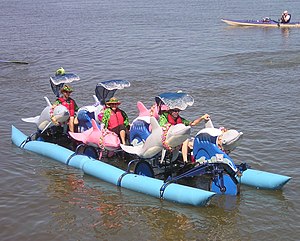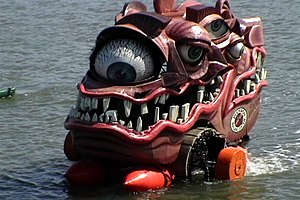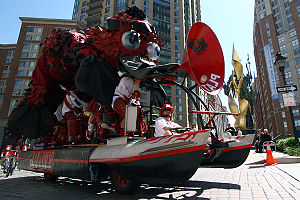
Arcata is a city adjacent to the Arcata Bay (northern) portion of Humboldt Bay in Humboldt County, California, United States. At the 2020 census, Arcata's population was 18,857. Arcata was first colonized in 1850 as Union, was officially established in 1858, and was renamed Arcata in 1860. It is located 280 miles (450 km) north of San Francisco, and is home to California State Polytechnic University, Humboldt. Arcata is also the location of the Arcata Field Office of the Federal Bureau of Land Management, which is responsible for the administration of natural resources, lands and mineral programs, including the Headwaters Forest, on approximately 200,000 acres (810 km2) of public land in Northwestern California.

Eureka is a city and the county seat of Humboldt County, located on the North Coast of California. The city is located on U.S. Route 101 on the shores of Humboldt Bay, 270 miles (435 km) north of San Francisco and 100 miles (161 km) south of the Oregon border. At the 2010 census, the population of the city was 27,191, and the population of Greater Eureka was 45,034.

Ferndale is a city in Humboldt County, California, United States. Its population was 1,481, up from 1,371 at the 2010 census. The city contains dozens of well-preserved Victorian storefronts and homes. Ferndale is the northern gateway to California's Lost Coast and the city, which is sited on the edge of a wide plain near the mouth of the Eel River, is also located near the extensive preserves of coast redwood forests.
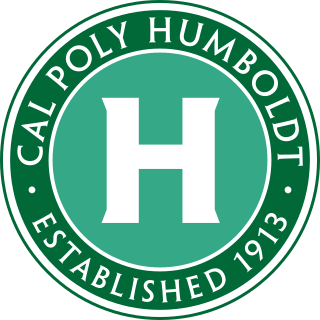
California State Polytechnic University, Humboldt is a public university in Arcata, California. It is one of three polytechnic universities in the California State University (CSU) system and the northernmost campus in the system. The main campus, situated hillside at the edge of a coast redwood forest, has commanding views overlooking Arcata, much of Humboldt Bay, and the Pacific Ocean. The college town setting on the California North Coast, 8 miles (13 km) north of Eureka, 279 miles (449 km) north of San Francisco, and 654 miles (1052.51 km) north of Los Angeles is notable for its natural beauty. It is the most westerly four-year university in the contiguous United States. Humboldt is a Hispanic-serving institution (HSI).

Hobart Ray Brown, was an American sculptor and the founder of Kinetic Sculpture Racing.

The North Coast of California is a region in Northern California that lies on the Pacific coast between San Francisco Bay and the Oregon border. It commonly includes Mendocino, Humboldt, and Del Norte counties and sometimes includes Lake and two counties from the San Francisco Bay area, Marin and Sonoma.

KHUM is a commercial Freeform broadcast radio station licensed to Cutten, California, serving Eureka and Humboldt County in California. KHUM is owned and operated by Lost Coast Communications, Inc.

Samoa is a census-designated place in Humboldt County, California. It is located 1.5 miles (2.4 km) northwest of Eureka, at an elevation of 23 feet. Samoa is located in the northern peninsula of Humboldt Bay and is the site of the Samoa Cookhouse, one of the last remaining original, lumber-camp style cookhouses. The name Samoa is used interchangeably with the peninsula it occupies. The population was 258 at the 2010 census.
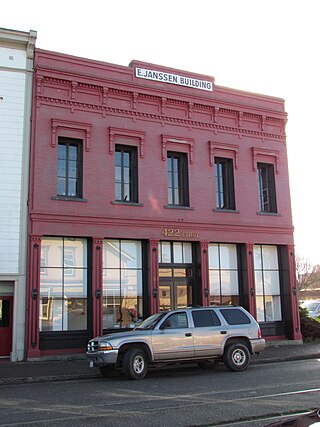
HSU First Street Gallery was a contemporary, fine arts gallery located in the E. Janssen Building at 422 1st Street in the historic Old Town district of Eureka, California. The gallery, which supported the Exhibition Programs of Humboldt State University, was an off-campus, non-profit student-oriented public outreach program and gallery which showcased regional, national and international artists, as well as art by faculty, staff, students, and alumni of the university.
The Arcata Community Recycling Center (ACRC), founded in 1971 as part of the Northcoast Environmental Center, is one of America's oldest non-profit recycling facilities. The center promotes environmental awareness in the North Coast and facilitates diversion of materials from landfills in Arcata and Eureka, California.
Albeeville is a former settlement in Klamath County, now located in Humboldt County, California. Albeeville was located on Redwood Creek, within an easy day's travel from Fort Gaston. The post office was named for Joseph Porter Albee, its first postmaster, who was murdered by Indians, and the Albeeville post office burned in November 1863.

The Prairie Creek Fish Hatchery near Orick, Humboldt County, California was one of the first small local fish hatcheries developed to improve the area's sport and commercial fishing, and is one of only three remaining hatcheries built in California from 1871 to 1946.
Duane Flatmo is an American artist best known for his murals, label art and kinetic art sculptures in northern California.

The E. Janssen Building at 422 First Street, Eureka, California, is a two-story Italianate commercial building. It was built in 1875 to be a hardware and general merchandise store. In 1973, it was the first building in Eureka to be placed on the United States National Register of Historic Places, and it was listed as a contributing property of the National Register Old Town Eureka Historical District in 1991. From 1998 to 2016, the building housed the HSU First Street Gallery, an art gallery run by Humboldt State University.
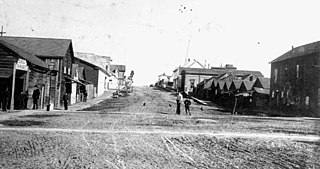
1885 Chinese expulsion from Eureka was an ethnic cleansing event that took place in Eureka, California on February 7, 1885.
